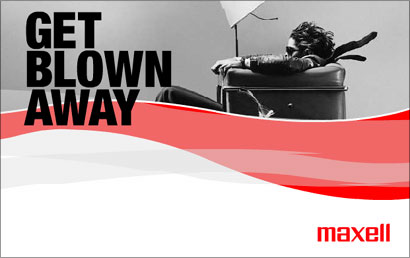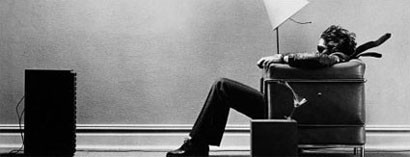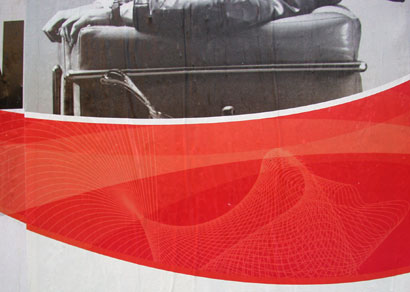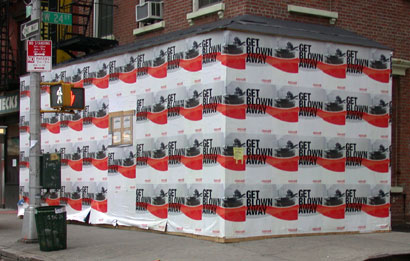All of a sudden, it’s the 70’s all over again.
New York City is a hotbed of what the media industry calls OOH (Out-of-Home) advertising, and recently a couple images from my childhood have been dug up, dusted off, and sent out to wander the streets like black and white zombies. October saw the album cover of Bruce Springsteen’s Born to Run — puffed with hot air and released in a 30th Anniversary edition — and December brought the Dude from the Maxell ads.

Dude!
At this moment, the Dude appears in street snipes (aka ‘wild posting’) and peeks out from behind a Don’t-call-it-Coke! Spencerian swash and mediocre tag line. But beyond any simplistic aesthetic issues, I have the vague sense that there’s something wrong here.
According to Maxell Executive Vice President Don Patrican, “The image of the hip, young guy being completely blown away by his entertainment experience is timeless. We had allowed this icon to become marginalized over the years. But now, when brand is so important in our business, we’ve decided to leverage this image that tens of millions of people associate with Maxell by putting more energy and investment behind it.”
Patrican continued, “Attempts had been made over the years to contemporize the ‘blow-away guy’, but we decided that the genius of the ad was the purity of the black-and-white image and how it thoroughly and elegantly communicates the joy of a great recorded entertainment experience. We just needed to find new ways to expose that powerful image.”
Now back in 1979, the Dude was hip, even with the tie and choice of Wagner in the television ads. Besides the leather jacket and long-ish hair — both symbols of generic rebellion — his hipness came from the Edmond May-designed JBL L100 speaker on the floor.

In the late 1970s, I was enthralled with the romance of the high-end audio shop. Before Razrs and iPods, groovy stereo equipment was a prime method for (usually) men to display their sophistication; and audio shops were full of these (lowercase) dudes engaged in endless discussions about speed control, wiring and pre-amps. These dialogues didn’t necessarily equip people to quantify the ineffable details of how one hears music; but they did contribute to the cult of the speaker.
So perhaps what I sense about the Dude’s reappearance, is similar to a phenomena described by David King in his 1997 book The Commissar Vanishes: The Falsification of Photographs and Art in Stalin’s Russia:
The source of the image’s “genius” referred to in the Maxell press release is the speaker. Otherwise, this could be an ad for pretty much anything, from Le Corbusier furniture (his chair) to air conditioning to lap dances. The Dude is the Dude because his passion is music. His rebellion is a rebellion described by Thomas Merton: a decisive turning away from the world’s distractions in order to follow his heart.
Sadly, advances in technology and the market have forced Maxell to expand beyond high-end audio tape, and they find themselves in the difficult position of trying to brand a company without a signature product. They still make analog cassettes, but when was the last time you popped one into a deck? The format was introduced in 1963 and still has market share in some parts of the world, but there are whispers of its eventual demise within 10 years. Beyond audio tape, their blank CDs are considered to be of medium quality; and they’re one of the remaining companies still producing legacy DAT/DDS tape formats.
So what makes them different? Where’s the equity? Where’s the sex?
That’s right, the Dude abides. But now, he’s just a Potemkin Dude; pantomiming his affections to a phantom muse.








This is really the strangest campaign, as noted. But it is an interesting metaphor in itself: the cropped (destroyed), iconic image, hiding behind a new!improved!swoosh! is highly representative of a company that once had something to sell, and now flounders in a market of iPods and online streaming.
Sad to see the Dude drown that way.
On Jan.02.2006 at 01:45 PM